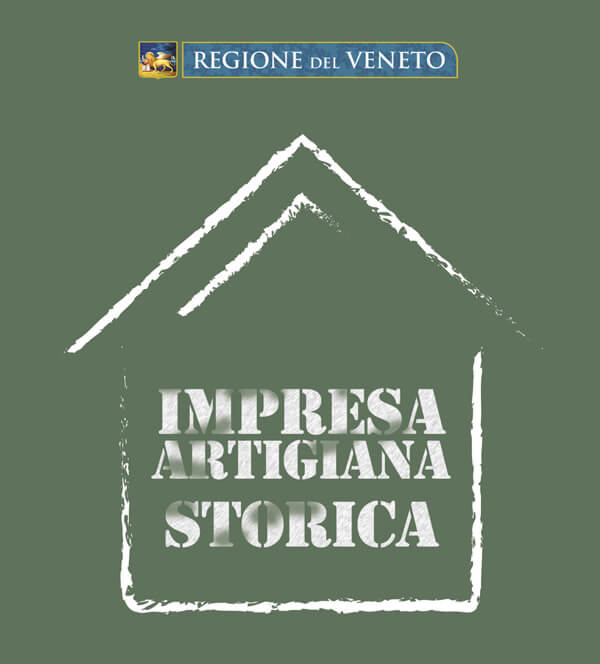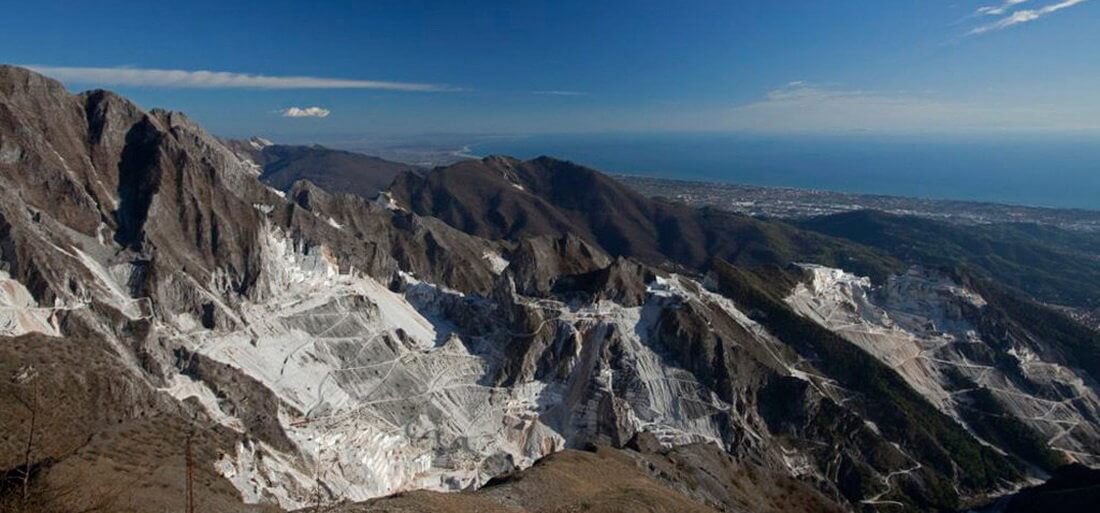
Italian marbles: the famous Carrara marbles
Updated 12 April 2018
Talking about Carrara marbles we refer to all italian marbles coming from Carrara. The most important extraction and manufacturing area is that of Apuan Alps that boasts a primacy at national and worldwide level for the selection and the productive marbles ability. In this area there are the most famous marble quarries of the world, even if in the last years the competition of two great powers such as China and India has increased.
Over the centuries, were almost opened two hundred quarries and today one hundred of them are still active, the majority open-air and some underground. The extraction techniques have developed: the use of antique manual tools, such as pick and wedges, has been replaced with an helicoidal steel wire with the penetrating pulley dating to the end of the nineteenth century, until arriving to modern times where technological and specific machineries are employed.
On clear days, following the Pedemontana highway, you can see the singular contrast of colours between the green fields and the surrounding woods, a cerulean sky, the white of the open-air quarries and the multi-coloured blocks on the plain.
The Apuan Alps
The Apuan are mountains that almost reach 2000 meters. The name comes from the Ligurian population who lived there before the Roman conquest. They are located in the north-west area of Tuscany, a few kilometers from the Ligurian Sea between the Lunigiana, the Garfagnana and the Versilia. They took the exceptional name of Alps thanks to the geological characteristics of roughness, steep slopes and altitude that are more similar to Alps than to Apennines. In this area, the prestigious Bianco di Carrara marble, is also extracted
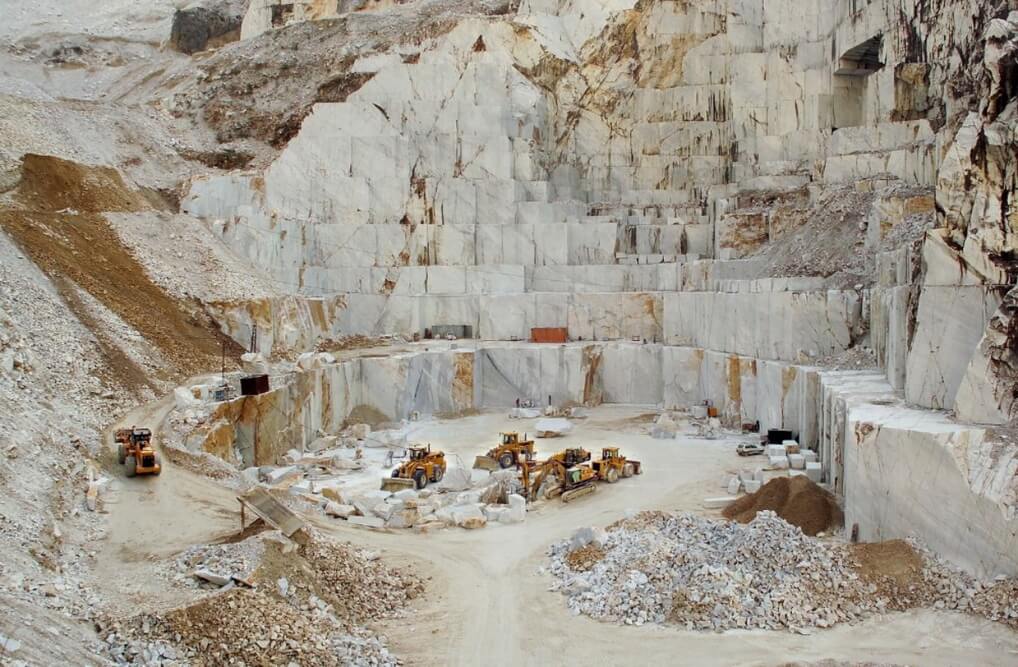
Italian marbles – quarries in Apuan Alps, Carrara
Carrara marbles categories
From Carrara marble basins come a myriad of marble products. From every quarry, various marble typologies are extracted with a very high component of calcium carbonate that gives the white background shade. These marbles have different mineralogical intrusions with micrometric, millimetric and sometimes centimetric stains and veins that characterize every material in an exclusive way. The polishing makes more visible the veins emphasizing the coloration and the shades and increasing the marbles variety. According to marble formation, to bottom-up stratigraphic succession, to morphology and to physical aspect, Carrara marbles are classified in the following main categories:
- Breccias: marble elements cemented by calcite presenting a white colour due to calcium carbonate and a variety of colours such as Breccia Medicea and Breccia di Stazzema

Drape in Breccia Medicea – scolpita da Arte 2000
- Inferior Bardiglio: cerulean and bluish colour marbles, with white shades in the veins
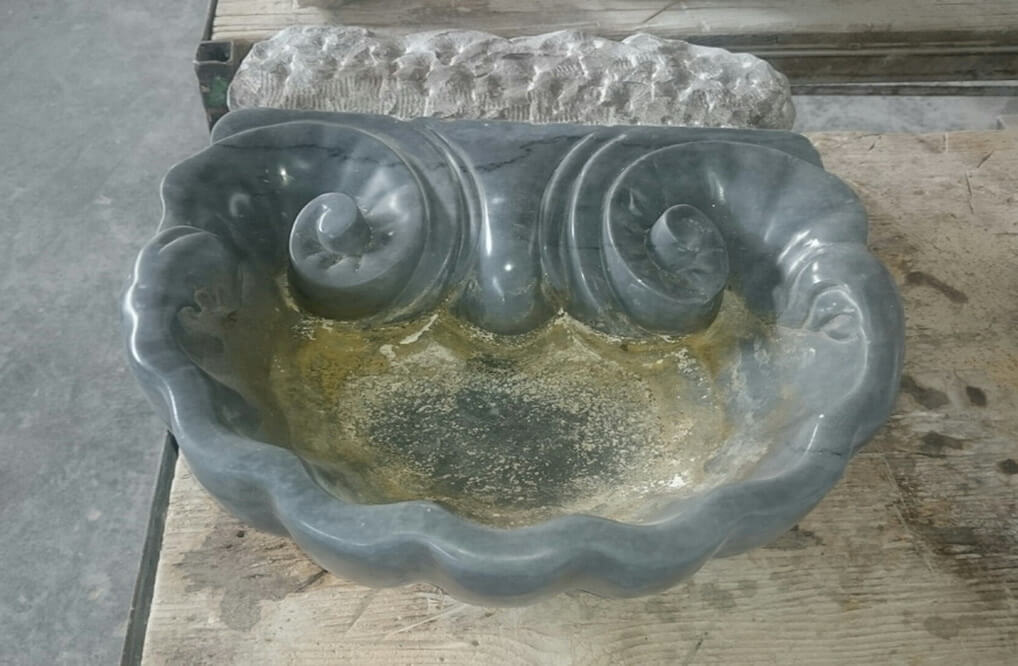
Basin in Bardiglio Imperiale – carved by Arte 2000
- Statuario: fine-grained marble with a high component of pure white, tending towards ivory, without veins. It is the most famous marble of Apuan Alps and the favorite by artists and sculptors; unfortunately it is running out and it is becoming more and more difficult to find it. It was considered by Michelangelo Buonarroti the most prestigious marble to realize his works as described in the anecdote on the grave of the Pope Julius II

Fireplace detail in Statuario – carved by Arte 2000
- Whites: marbles with pearly white background colour, with grey coloured fine veins and intrusions more or less visible. Among these the classical and famous Bianco di Carrara

Fountain in Bianco Carrara – carved by Arte 2000
- Arabescato and Calacatta: marbles with white background colour; they have contrasting greyish, greenish or violet shades, intrusions and veins more or less visible. Among these the Venatino, Statuarietto, Statuario Venato, Calacatta, Paonazzetto, Paonazzo, Arabescato
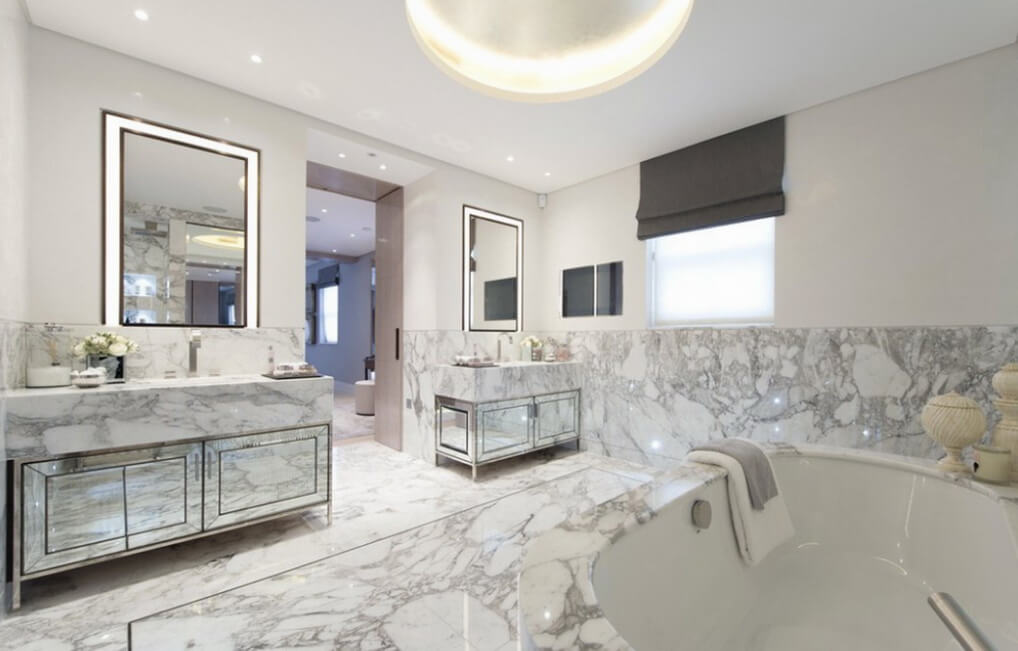
Interiors: bathroom in Arabescato – by Arte 2000
- Superior Bardiglio: they are the last layer of marble formation, compared to inferior Bardiglio they have a lighter and clearer grey coloration, often commercially defined Bardiglietto
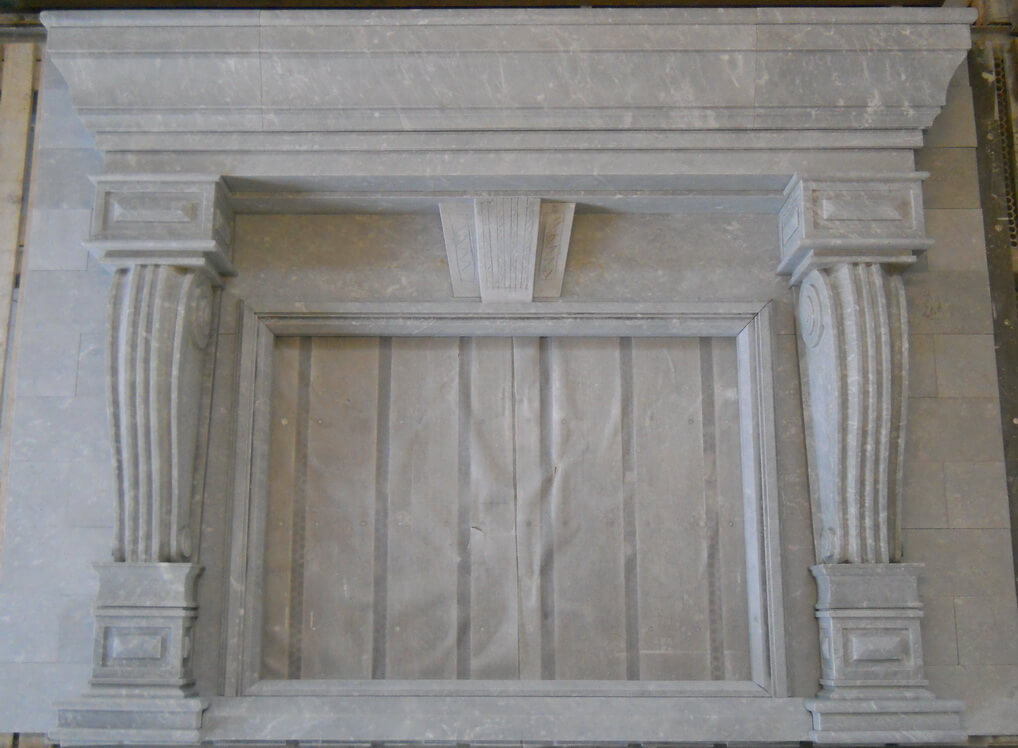
Fireplace in Bardiglio marble – carved by Arte 2000
The colours of nature are unreachable to the hands of the artist, that’s why they yearn for them.
Editor’s note
Final note:
The information contained in this article are for guidance only. We remind you that a lot of marbles are mentioned with the well-known commercial name, often different from the real one.
This article contains general information. For questions and curiosities leave a comment below. If you wish to be contacted, please fill out the form.
